Introduction:
Carbon mineralization from soils using 24-48 hour aerobic incubations have been shown to reflect organic matter mineralization and short term soil nutrient availability (doi:10.2136/sssaj2016.04.0106). We have developed a simple method for measuring soil Carbon mineralization from “24 hour burst” by connecting inexpensive IRGA CO2 sensors to teensy microcontrollers. This project serves as an initial proof-of-concept project to test this methodology.
--Materials and Methods--
Materials:
1x SoilspeQ Device
1x Syringe Module
6x Classic Mason Jars
3x Modified Mason Jar Lids with Epoxy
3x Modified Mason Jar Lids without Epoxy
Soil Samples from multiple sources, including cover cropped, control and border row soil
1x Scale
1x Plastic Weigh Boats
1x Standard Plastic Test Tube
Methods:
Collect soil sample to be tested. We collected soil samples from three distinct locations: 1) between maize rows planted with cover crops, 2) between maize rows without cover crops, and 3) the bare ground border strip adjacent to the maize plots. Soil samples were collected from 2 depths, 1-5 cm and 5-10 cm.
Air dry your soil for 48 hours
Weigh out 50 grams of your now dry soil
Place these 50 grams into a 1 pint glass mason jar
Add 10 mL of water into the same jar
Seal the jar with soil and water tightly using a modified lid with rubber stopper
Wait 24 hours
Set up your syringe, stopcock and needle
With the valve unlocked, pierce the rubber stopper with your needle
Extract 20 CC’s of gas from the jar
Turn the valve, sealing the gas inside the syringe
Remove the needle carefully
Place the stopcock valve to the side port on the SoilspeQ
Answer any project questions associated with your gas sample and click “Run Measurement”
Turn the valve on the stopcock to the open position
Slowly inject the gas into the SoilspeQ Chamber over a little less than 10 seconds
After all gas has been injected, keep the syringe inserted until measurement has finished
Save measurement to the PhotosynQ website
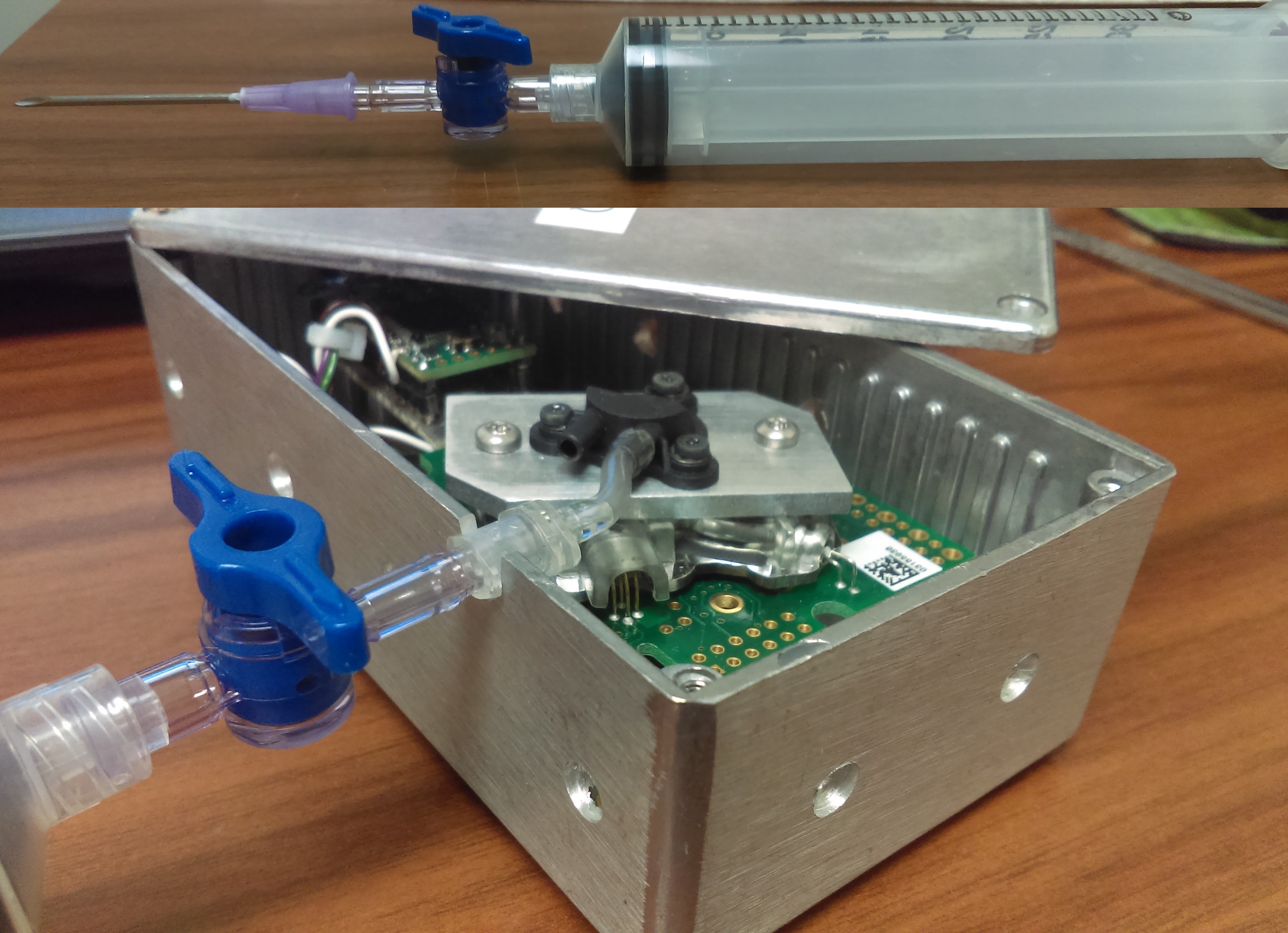
Results and Discussion:
We used PhotosynQ’s online analysis tools to see if there were any significant results, and not only did we find that, but we also learned some other interesting lessons. First and foremost, at the lower depth (5-10 cm) we were able to see a significant difference in Carbon mineralization between the border rows and the soils between the maize rows both with and without cover crops. The soil taken from the lower depths of the border mineralized significantly fewer micrograms of carbon per gram of soil than the other two soils from similar depths (Below).
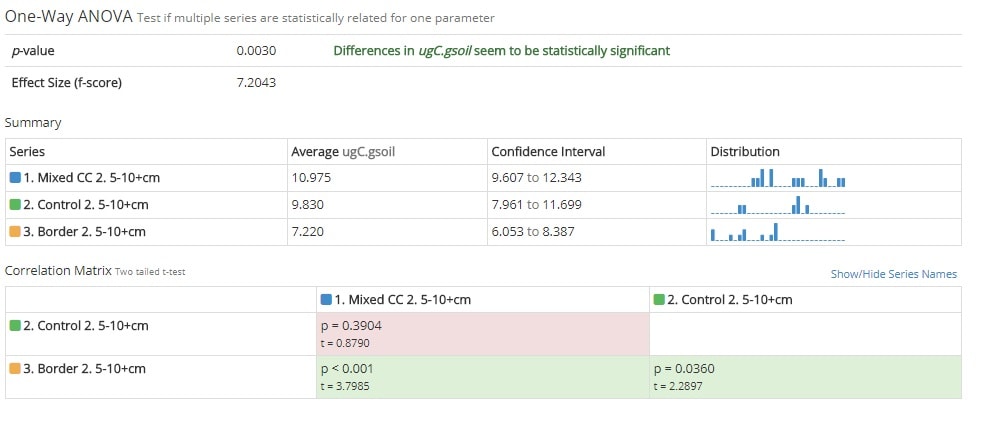
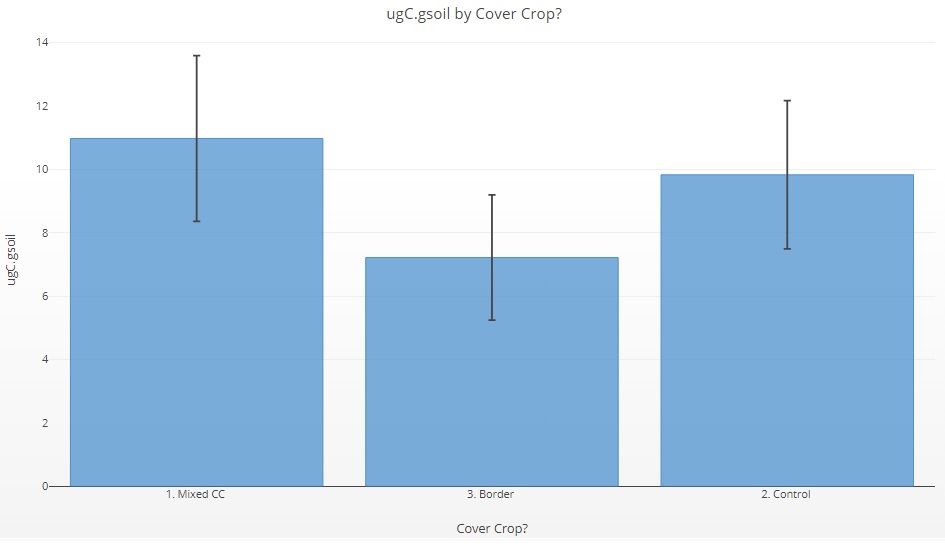
We were also able to see very clearly that overall, samples collected closer to the surface (1-5 cm) had significantly greater Carbon mineralization than samples taken at the deeper depth (Below). This was not a surprising result as soil organic matter content is higher at the soil surface and decreases with depth.

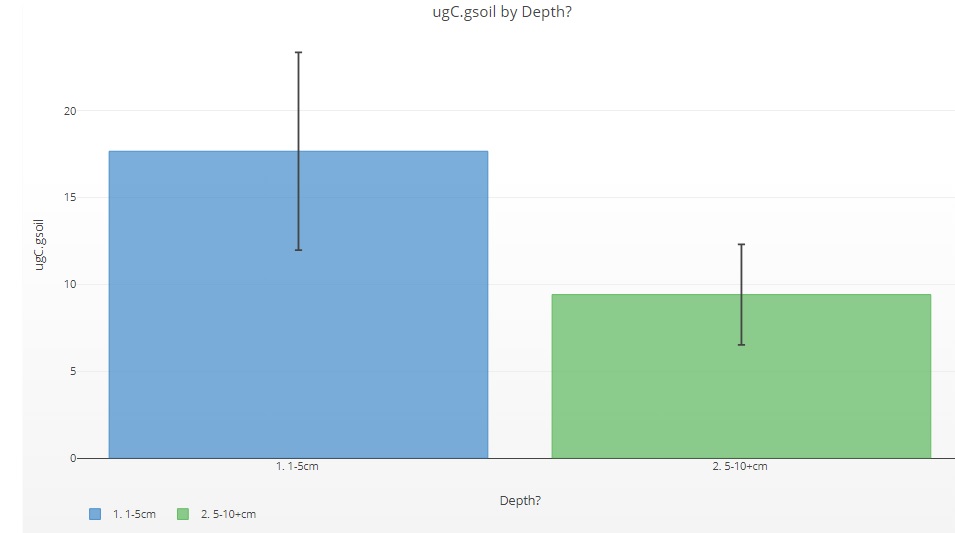
Finally, we learned a very interesting lesson we were not expecting. It was our intention in sealing the rubber stoppers with epoxy that we might notice that the regular ones had a slight leak to them, maybe some CO2 was getting out around the edges, and the epoxy seal would eliminate that. However, as the measurements came in that was not what we were noticing. Running some simple comparisons, it is very apparent that the epoxy seals were not helping, but rather had a negative effect.There was significantly less CO2 in jars that had been treated with an epoxy seals, versus the exact same sample in a jar that had not been treated with epoxy.

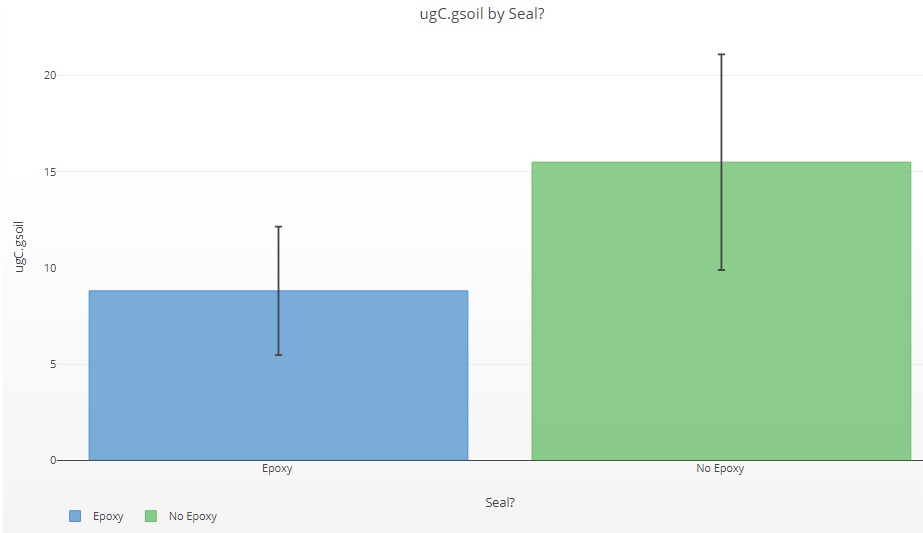
We later learned that even after the epoxy has cured, and totally dried, it can keep “off-gassing” for months after the fact, and this can really affect your measurements as it turns out! It was a good lesson to learn and moving forward we will not be using this epoxy to say the least.